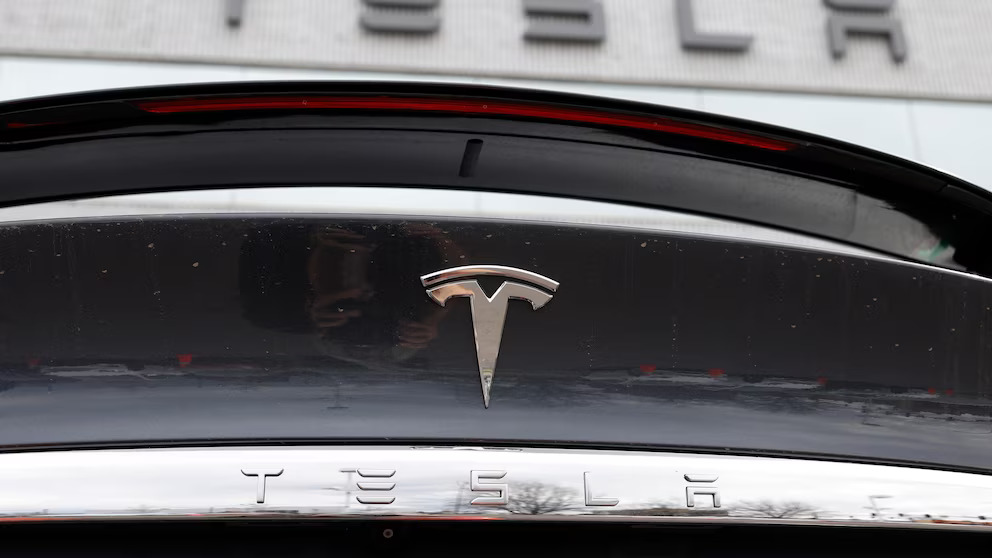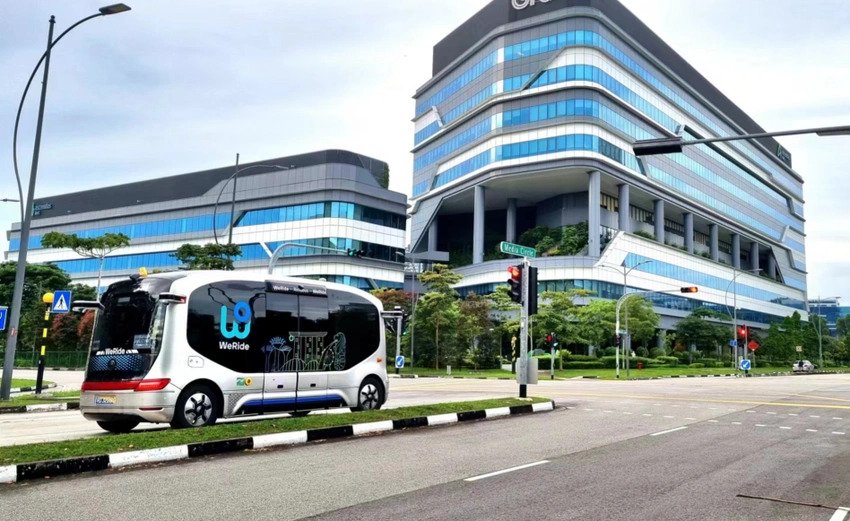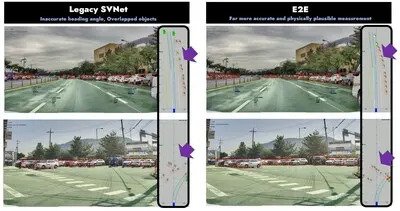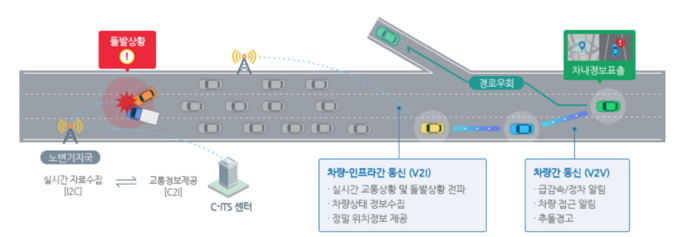
Vueron Newsletter
No. 72
2023.12.15
| Tesla recalls nearly all vehicles sold in US to fix system that monitors drivers using Autopilot | ||
| WeRide Brings Self-Driving Vehicle Testing to Singapore | ||
| Self-driving car safety training on driver’s license tests starting next year | ||
| LTE-V2X to be laid down in Korea’s autonomous driving telecommunication |
1. Tesla recalls nearly all vehicles sold in US to fix system that monitors drivers using Autopilot
-
- Tesla is recalling over 2 million vehicles in the U.S. to update software and address a defective system related to the Autopilot feature.
- The recall follows a two-year investigation by the National Highway Traffic Safety Administration (NHTSA) into crashes involving the Autopilot system, some of which were fatal.
- The software update aims to increase warnings and alerts to drivers and restrict the areas where basic versions of Autopilot can operate.
- Safety experts, while acknowledging the recall as a positive step, criticize it for not addressing the fundamental issue of Tesla’s automated systems failing to detect and respond to obstacles.
- The recall covers Tesla models produced between October 2012 and December 2023.
- Critics argue that the update is a compromise and doesn’t address the lack of necessary hardware, such as night vision cameras.
- The investigation into Tesla crashes remains open, with NHTSA monitoring the effectiveness of Tesla’s remedies.
- NHTSA has investigated numerous Tesla crashes involving automated systems, with at least 17 reported fatalities.

Critics argue that the recall may not fully address the underlying issues, particularly the system’s failure to detect obstacles and respond appropriately. Ongoing investigations and regulatory scrutiny suggest a growing focus on the safety of automated driving systems, with NHTSA becoming more assertive in addressing potential defects and risks associated with Tesla vehicles.
2. WeRide Brings Self-Driving Vehicle Testing to Singapore
-
- WeRide, a self-driving tech company, has been granted permits to test its autonomous vehicles (AV) on public roads in Singapore.
- The licenses (M1 and T1) from the Land Transport Authority of Singapore allow WeRide to operate AVs in four countries: China, the United States, the United Arab Emirates, and Singapore.
- The licenses were obtained after testing the WeRide Robobus at Singapore’s Centre of Excellence for Testing and Research of Autonomous Vehicles (CETRAN) since late August, replicating typical urban traffic scenarios.
- WeRide claims “international leadership” in Level 4 driving, focusing on static obstacle recognition and dynamic obstacle avoidance.
- The three-month period to obtain licenses is the shortest on record, enabling larger-scale testing on public roads in Singapore.
- WeRide operates in various locations globally, conducting autonomous testing and operations in 26 locations, primarily in China.
- The company’s tech is applied to a range of vehicles, including Robobus, Robotaxis, Robovan, and Robosweeper street cleaners.

The short period to obtain licenses reflects WeRide’s efficient testing and compliance process, potentially indicating a high level of readiness and reliability in its autonomous systems. The company’s ability to operate in multiple countries highlights its international approach and adaptability to diverse regulatory environments.
3. STRADVISION to Unveil Next-Gen ‘3D Perception Network’ and Showcase SVNet Portfolio at CES® 2024
-
- STRADVISION, an automotive industry innovator in deep learning-based vision perception technology, is set to unveil the ‘3D Perception Network’ at CES 2024 in Las Vegas.
- The ‘3D Perception Network’ represents a transformative leap in autonomous systems, enhancing the role of cameras in the Advanced Driver Assistance System (ADAS) and Autonomous Driving (AD).
- The technology utilizes LiDAR sensors during development but eliminates the need for in-vehicle LiDAR, showcasing STRADVISION’s commitment to cutting-edge, practical, and economical ADAS/AD applications.
- Key highlights of the ‘3D Perception Network’ include higher scalability, reduced post-processing complexity, an expanded role for cameras in vision, enhanced cost efficiency, and improved accuracy.
- The technology introduces a 30% decrease in ARM resource usage, ensuring flexibility across various platforms and optimizing efficiency for the Software Defined Vehicle (SDV) era.
- The implementation of the ‘3D Perception Network’ reduces post-processing code complexity by 50%, simplifying integration and maintenance processes.
- The technology enhances cost efficiency, making it an economically viable choice for Original Equipment Manufacturers (OEMs) looking to integrate advanced ADAS/AD technologies.
- The accuracy of the ‘3D Perception Network’ is improved, reducing detection errors by 10% and boosting detection stability by 30%.

The introduction of the ‘3D Perception Network’ signifies a significant advancement in ADAS/AD technology, particularly in leveraging cameras for enhanced perception and planning in autonomous systems. STRADVISION’s strategic decision to eliminate in-vehicle LiDAR aligns with the industry’s pursuit of practical and cost-effective solutions for widespread adoption of autonomous driving features.
4. Self-driving car safety training on driver’s license tests starting next year
-
- The National Police Agency in South Korea has announced the ‘Road Traffic Safety Promotion Strategy for the Era of Full Autonomous Driving.’
- The plan is divided into three phases: Phase 1 (2023-2025) involves Level 3 vehicles, Phase 2 (2026-2027) focuses on Level 4 buses and shuttles, and Phase 3 (from 2028) aims at Level 4 passenger vehicles.
- Autonomous vehicle traffic safety education will be added to the curriculum for new drivers starting next year.
- In Phase 1, responsibilities for managing safe operations will be clarified, and a verification system will be established. Sanctions, including penalty points and fines, for violations by autonomous driving systems will be established by 2025.
- In Phase 2 and 3, infrastructure initiatives include a nationwide real-time signal information collection system (from 2027) and a comprehensive traffic information platform (post-2028).
- A ‘simplified driver’s license’ for vehicles with a certain level of autonomous driving systems is set to be introduced in 2028.
- The National Police Agency plans to enact the ‘Autonomous Vehicle Operation Safety Act’ to outline compliance requirements and legal responsibilities.
- Also, research and development projects and a dedicated organization for autonomous driving-related road traffic policies will be expanded.

The inclusion of autonomous vehicle education for new drivers demonstrates a proactive approach to prepare drivers for the evolving landscape of autonomous driving. The establishment of sanctions and a simplified driver’s license specific to autonomous driving systems suggests a commitment to regulating and facilitating the integration of autonomous vehicles into the transportation ecosystem.
5. LTE-V2X to be laid down in Korea’s autonomous driving telecommunication
-
- The national next-generation intelligent transportation system (C-ITS) communication method, after more than four years of debate, has been decided as ‘LTE-V2X’ in Korea.
- The Ministry of Science and ICT and (MSIT) the Ministry of Land, Infrastructure, and Transport (MLIT) plan to set LTE-V2X as the single communication method and revise technical standards based on the decision of the ‘C-ITS Single Communication Method Decision Expert Committee.’
- The decision marks the resolution of a six to seven-year debate between the Wi-Fi-based wave and the cellular-based LTE-V2X camps.
- Despite the decision, actual investment in LTE-V2X infrastructure is expected to take time, with standards and planning scheduled for next year.
- MLIT plans to conduct empirical tests to establish installation standards, considering factors such as spacing on actual roads and compensation for interruptions in tunnels.
- The investment in C-ITS services, crucial for the safety of autonomous vehicles and general car drivers, is expected to increase with the decision on the communication method.
- However, LTE-V2X infrastructure’s actual deployment on roads is anticipated to take nearly a year, involving demonstrations, standardization, and planning.

The decision to adopt LTE-V2X as the communication method for C-ITS marks a crucial step in resolving a prolonged debate and allows for a unified approach to intelligent transportation systems. While the decision has been made, the actual implementation of LTE-V2X infrastructure is anticipated to face challenges, as standards and plans need to be developed and tested through empirical trials.
*Contents above are the opinion of ChatGPT, not an individual nor company

